The ancient monument of Stonehenge has entranced and intrigued visitors to England for thousands of years. You may no longer be able to get close enough to clamber over the stones, but it’s still a national icon and a universally recognized symbol of Britain.
Now, to mark 100 years of these striking stones being formally owned by the British public, charity English Heritage is taking a look back at photographs of Stonehenge visits in days gone by.
English Heritage, which manages over 400 of England’s famous historic houses and monuments, invited several families to come and recreate old snapshots from the 1950s, ’60s and ‘70s.
The resulting project is both seeped in nostalgia and looks forward to Stonehenge’s future.
Back to the future
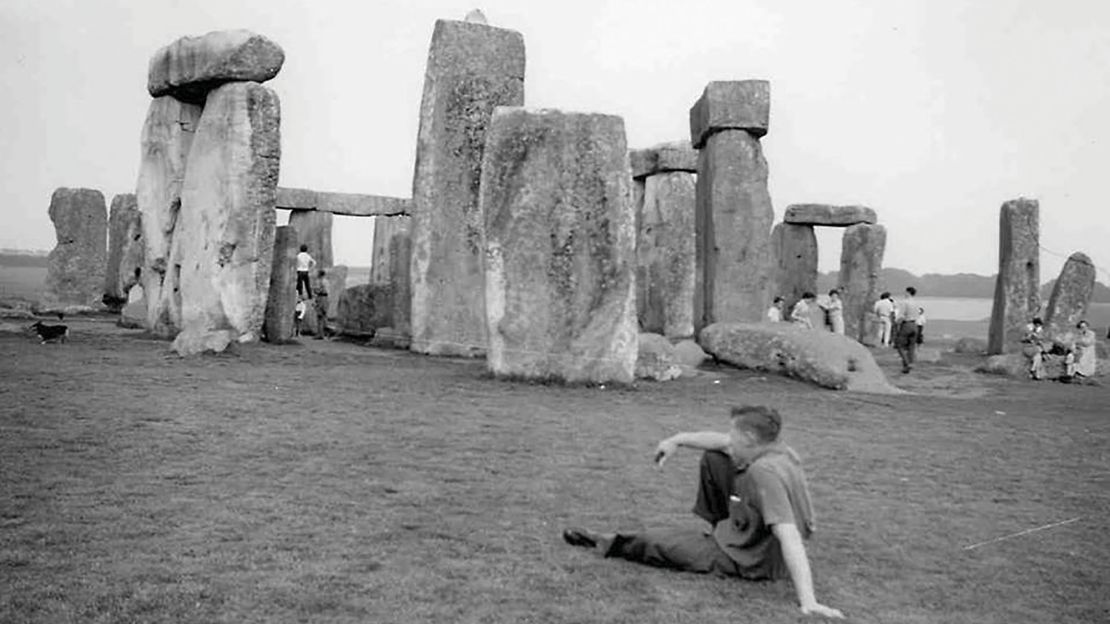
Brit Bob Heyhoe was contacted by English Heritage after he posted a photograph on Facebook of himself as an 18-year-old recent Royal Air Force recruit, admiring the stones on a summer’s day in 1960.
“When my mother died I found that photograph in her possession,” Heyhoe tells CNN Travel. “I didn’t even know the photograph existed.”
Heyhoe remembered the day out though – vividly – and looking at the image instantly transported him back to his youth.
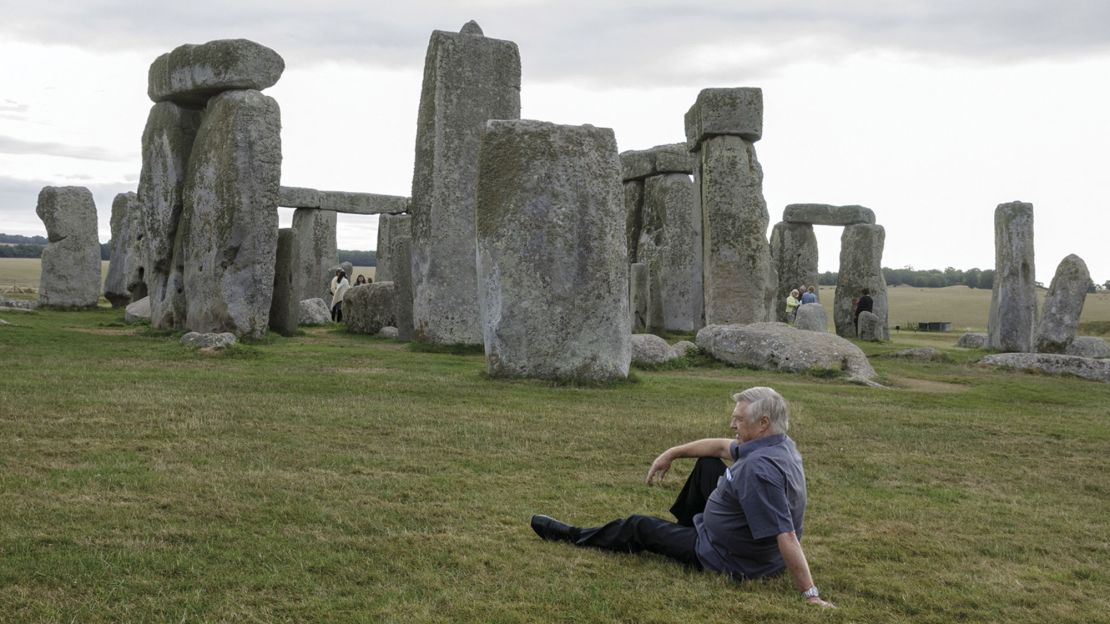
“My father was a lorry driver and drove six days a week and on the seventh day he would take us to Cheddar Caves, Salisbury Cathedral, Wells Cathedral, Stonehenge or anywhere along the south coast for a day out,” he says.
“I was only a sort of impressionable 16- or 18-year-old and had never seen anything that big in my life before. It got me interested in the ancient people,” he says.
The image was taken on the family’s brownie box camera and it was the only snapshot from the day at Stonehenge. But Heyhoe recalls the impact seeing the stones had on him. Since then, he’s visited ancient attractions including the Egyptian pyramids and Mayan temples.
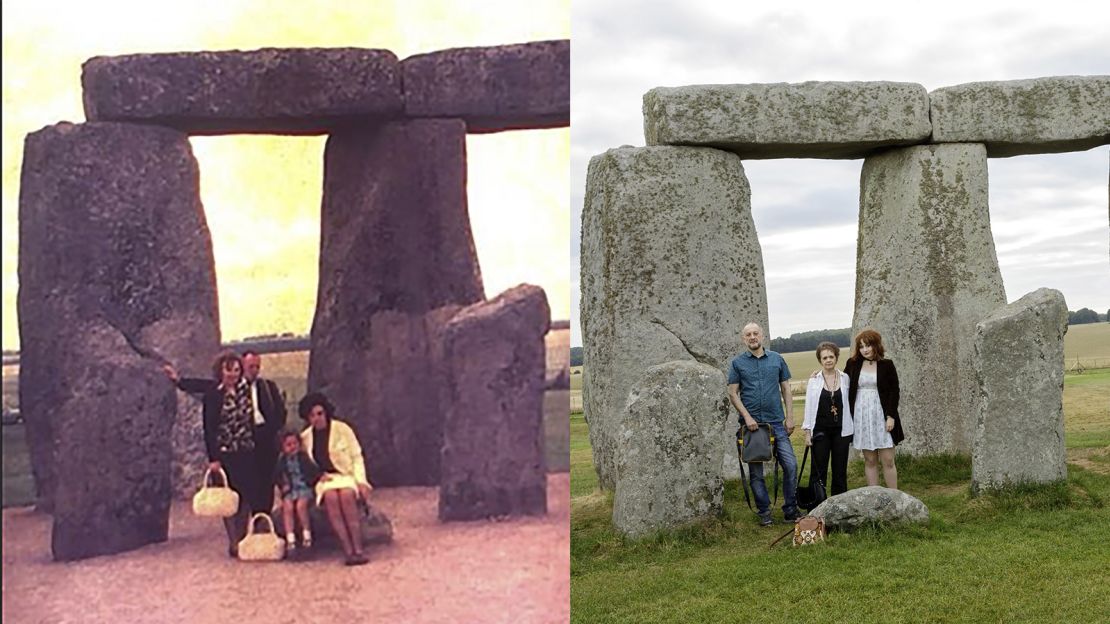
“It stirred my interest,” he explains.
Returning to Stonehenge in 2018 to recreate his shot was a special experience for Heyhoe. He felt close to his parents and found himself reflecting on the past.
Plus, it was incredible to see the stones again.
“To get back in contact with the actual rocks themselves was amazing because for the past 20-odd, 30-odd years you’ve been cordoned off and not allowed to clamber around them,” he says.
Special permission was given for the guests to get up close and personal with the stones for the purposes of the photography project.
Stonehenge
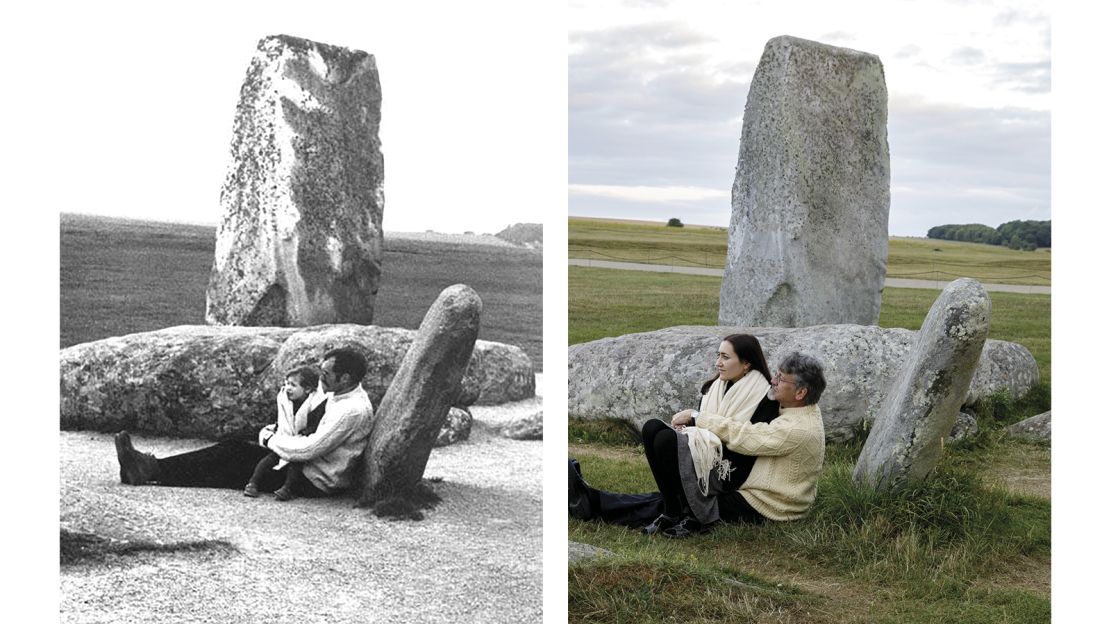
American Taney Roniger also says recreating her old photograph helped her connect to loved ones who have passed.
She visited Stonehenge in 1971, when she was just three years old. Roninger’s mother took an evocative shot of the then-toddler cuddled with her father, leaning against one of the stones.
Roniger returned to recreate the image in 2018, this time with her husband, who even wore the same white knit sweater her father wore in the original shot.
“The original is one of my favorite photographs, I really treasure it,” she says. “Returning to Stonehenge after all those years was really special. The stones were overwhelming, I had the sense that they were bigger even than my first visit, and it felt like my parents were with me.”

Helena Myska also paid attention to detail when recreating her family photograph. In the original image, also taken in 1971, she was nine and was photographed with her mother and four-year-old sister.
She wore a plaid skirt and knee-high white socks, while her little sister wore a striped shirt and orange shorts.
“My family had emigrated to England three years earlier from Czechoslovakia following the Russian invasion in 1968,” she recalls. “My father had been told about the ‘amazing stones’ and had previously hitchhiked to visit them. He was anxious now that we should see them too and so we arrived late afternoon and bought the ice creams that we are eating in the early photo.”
In the 2018 version of the photo, Myska wore checks and her sister wore stripes, to add that layer of authenticity.
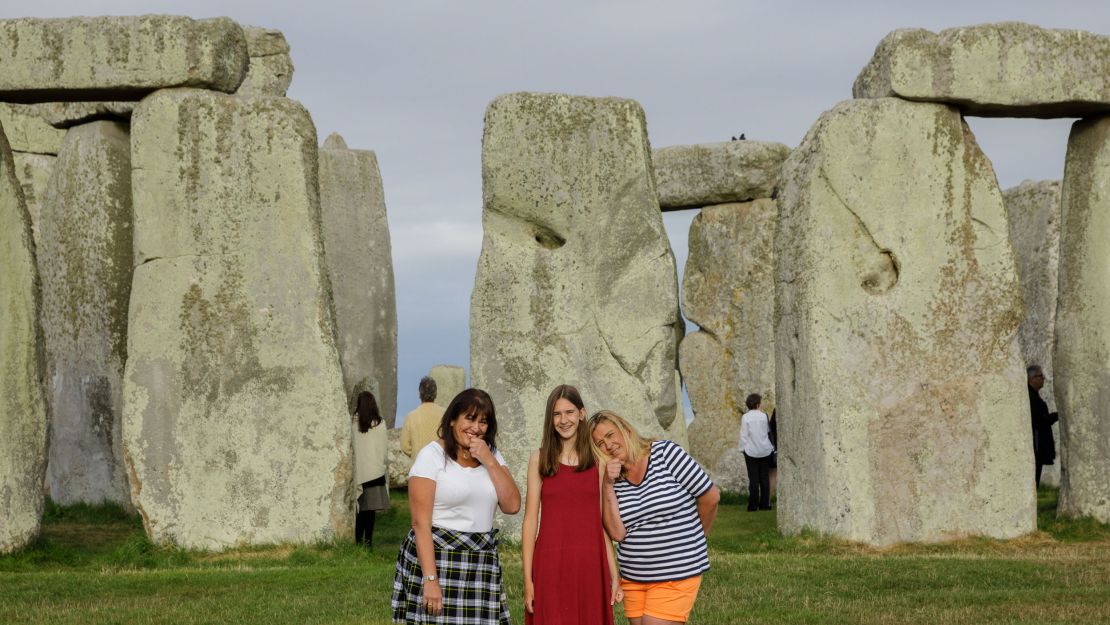
“Recreating the photo was emotional and makes me realize how many years have gone by – we’re not the same people, we all look so different,” she says. “But Stonehenge has been here so long and in that context the time between the first photo and this one is so short!”
The oldest photograph that’s been recreated was courtesy of Rowland Allen. Just a boy in the 1955 original, he was photographed alongside his mother, father, grandmother and cousins.
“Every August, from when I was two to about fifteen, my family would stop at Stonehenge on our way to Cornwall. We’d sit down, get a flask out, have a picnic and muck about,” he recalls.
“Coming back to Stonehenge this summer was incredible. We traveled from Florida just to recreate this childhood memory and to get three generations of our family in the spot once again. The visit helped me to remember family members who aren’t here anymore – and to create new memories for the new generation.”
Add your image
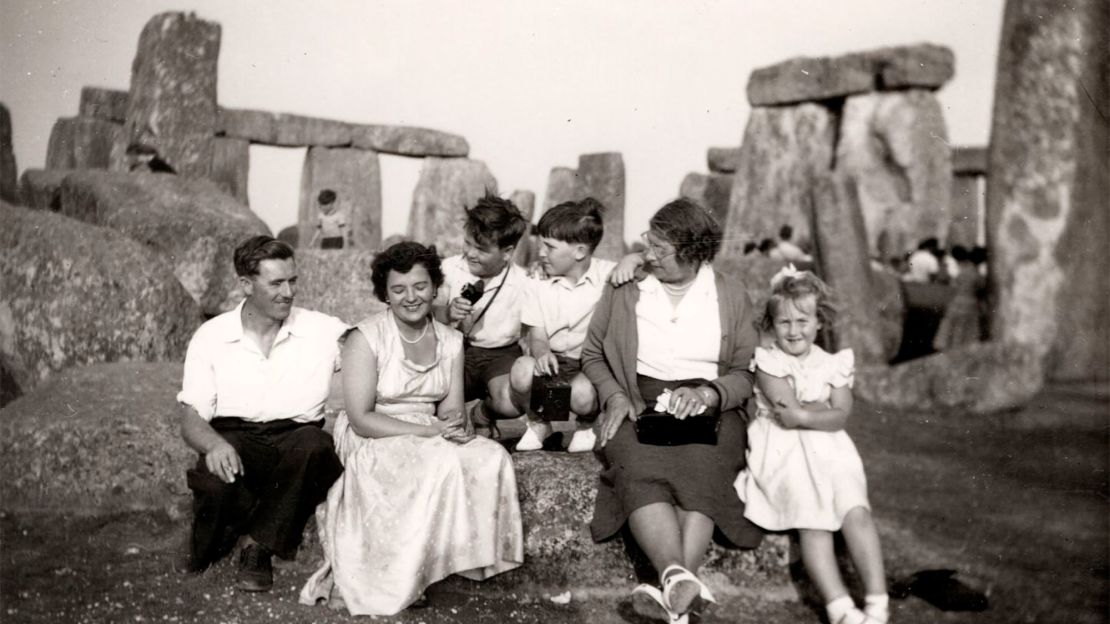
These then-and-now shots form part of a digital photo album English Heritage is working on – and it’s calling upon people around the world to send in their vintage Stonehenge shots to add to the story.
Kate Davies, English Heritage’s Director of Stonehenge, says: “People have been visiting Stonehenge for centuries and since the 19th century, people have felt compelled to take photos of themselves and their loved ones in front of the stones.”

2018 marks the centenary of the monument being owned by the British public: In 1918, local barrister Cecil Chubb and his wife Mary donated Stonehenge to the nation.
“Stonehenge is an important place in many people’s memories, and each and every person who has visited the monument is part of its story. This archive is a way of making us all part of the ongoing history of this incredible place,” adds Davies.
If you want to add your shot of Stonehenge – or just browse more pictures past and present, you can check out gmstonehenge100.co.uk.












